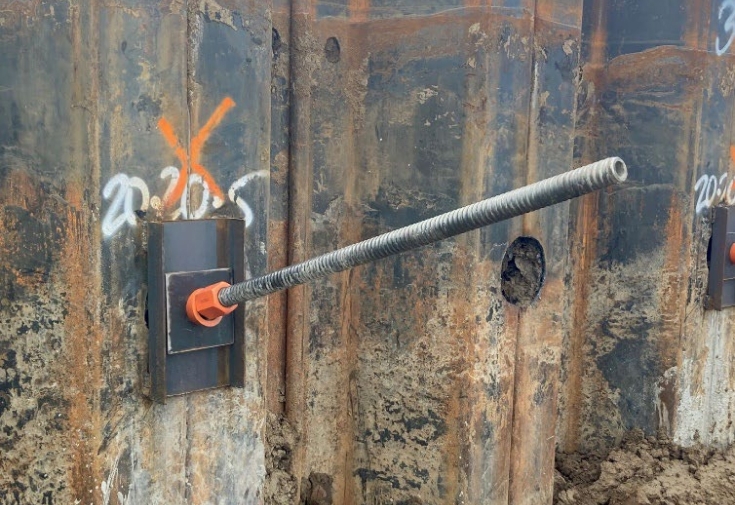MAGNACORE Sheet Pile Retaining Walls
- Product Family MAGNACORE
- Subcategory ELEMENT
- TIP Category DESIGN
- Tags SHEET PILE, RETAINING WALL,
TIEBACK
TIP Description
Sheet piles are commonly used for retaining walls in land excavation, cofferdams, sea walls, etc. Sheet piles can be used as temporary or permanent installations. Sheet piles serve as a barrier to prevent erosion and soil loss during excavation.
Common Sheet piles:
There are a few different materials that are commonly used for sheet piles. The application and longevity of the project can determine the optimal sheet pile to use.
Common sheet pile materials are:
– Timber sheet piles
– Reinforced concrete sheet piles
– Steel sheet piles

Installation:
- 1. Before installation, check sheet piles for any possible damage to the structural integrity.
- 2. Drive the first pile to desired depth. Installation should be closely monitored and should cease advancement if pile fails to reach depth.
a. If the pile does not reach depth, the attempt to remove the obstacle should be made either through partial excavation or the use of a water jet.
b. See project details for the allowable limit of partially driven piles. - 3. Vibratory hammers are commonly used to install, however, if soil is too dense, impact hammers may be used.
- 4. The next pile should interlink with the previous pile and advance to desired depth.
- 5.This process shall be repeated until the required number of piles is met.
- 6.If sheet piles cannot resist the overturning moment of the soil, tiebacks can be added to increase resistance to overturning.
- 7. Excavation to the elevation of the first row of tiebacks is commenced.
- 8. Tiebacks are typically installed between a 10-to-20-degree angle, although can vary depending on the project.
a. The tiebacks bond to stable soils outside of the active zone and a bond-breaker is used through the active zone. - 9. A singular row, or multiple if required, of tieback piles are connected structurally by a waler.
a. If multiple rows are required, after the first row of tiebacks are installed and locked off, the soil is then excavated to the elevation of the next row of tie backs and installed accordingly.
b. This process is then completed for all the necessary rows of tiebacks. - 10. Walers are used to transmit the force from the individual tiebacks to an evenly distributed force across the sheet pile wall.
- 11. Tiebacks must be locked off to actively engage the soils behind the wall by placing a load chair and load ram over the pile, engaging the necessary lock off load, and tightening the nut.
- 12. Once any necessary tiebacks have been installed, the final excavation
takes place.
If you need more assistance…
Please reach out via email at info@intechanchoring.com or at our Office
Phone at (800) 223-7015


